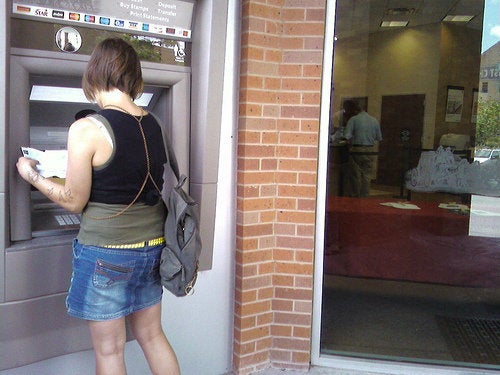
This month the government released figures showing more than 1.3 million people joined credit unions in 2011 -- more than double the previous year's total of less than 600,000. The gain is strong evidence that consumers are fed up with high bank fees and are leaving in large numbers for credit unions. But when you dig a bit deeper into the numbers, the results are even more significant.
The National Credit Union Administration reported that nearly 400,000 consumers joined credit unions in the 4th quarter of 2011, a period that encompassed the furor over Bank of America's announced (and later rescinded) $5 a month debit card fee and the emergence of Bank Transfer Day (Nov. 5), the viral phenomenon that urged people to move their money from big banks to credit unions.
The 400,000 who joined credit unions are 31 percent of the year's total of 1.3 million. But these are net figures -- new members minus account closings. Notably, the 4th quarter is a time when many dormant accounts are closed. A typical reason: people have paid off an auto loan arranged indirectly through an auto dealer and have no other account activity with the credit union.
In fact, so much paring of dormant accounts takes place toward year-end that it's not unusual for credit union membership to actually go down in the 4th quarter, as closed accounts exceed those opened by new members. We've seen that occur five times in the seven years prior to 2011. The 400,000 net gain in new members in the fourth quarter of 2011 was actually 530,000 greater than the average change in members over the same period during the preceding seven years.
We also think an additional and perhaps better measure of membership activity at credit unions comes from looking not only at new people who joined, but at new checking accounts that were opened. That's because Bank Transfer Day was triggered in large part by debit card fee increases at big banks.
When you look at the change in new checking accounts, credit unions saw a net increase of about 737,000 in the fourth quarter -- that's nearly three times the average fourth-quarter growth of these accounts in the past seven years. By establishing checking accounts, these new and existing members alike are apt to make their credit union their primary financial institution (PFI). Whether at banks or credit unions, checking accounts are the cornerstone of a PFI relationship.
What's driving consumers to move their accounts? Results of a survey Credit Union National Association conducted in February of 1,000 registered voters -- credit union nonmembers as well as members -- provide a pretty good indication. Consider:
• Banks received a favorability rating of 69 percent. But that's the lowest favorability rating we've seen since we began doing the survey 14 years ago. By contrast, 80 percent of those surveyed viewed credit unions favorably.
• More than 8 in 10 consumers said banks today charge too much in fees. Eighty-one percent said this about banks; only 13 percent said the same about credit unions.
• For the first time since we started the survey, as many people (43 percent) viewed credit unions as the best place to keep their day-to-day checking and savings as they did banks; and
• About three out of four (74 percent) said credit unions "look out for the little guy," compared to 18 percent who felt that way about banks.
Taken together, the government data and our association's voter survey results offer compelling evidence that high banking fees and all the attention surrounding Bank Transfer Day motivated people to move to credit unions.